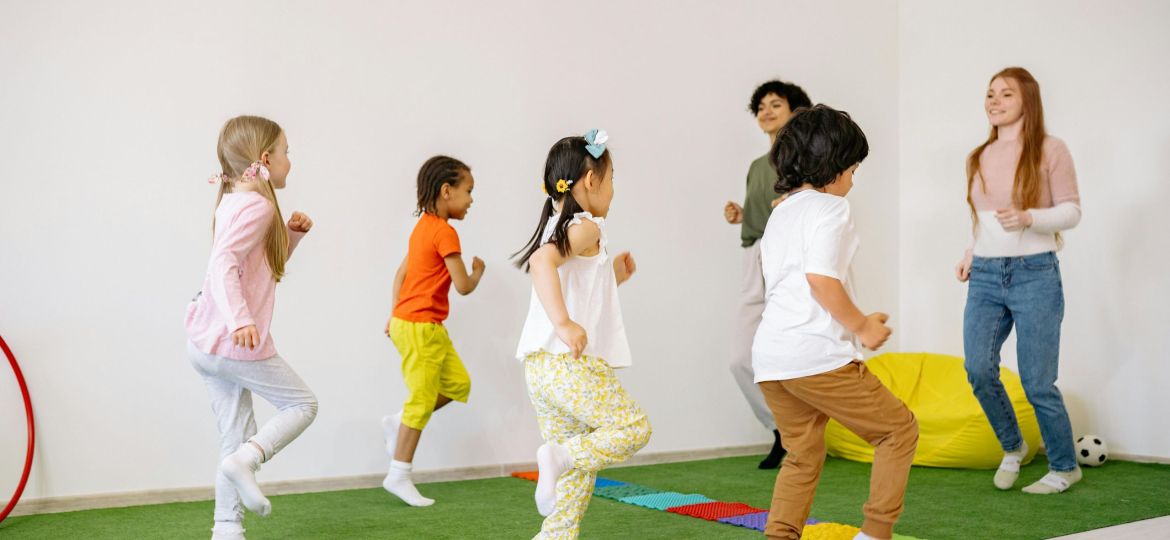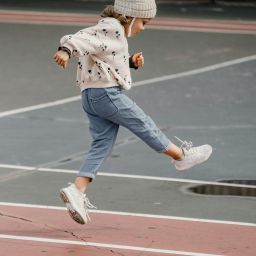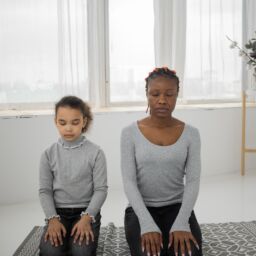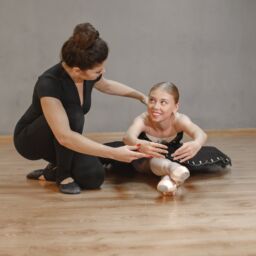
FH Summary: Exercise habits are crucial for children’s overall well-being, offering physical, mental, and social benefits that extend beyond childhood. By integrating fun and engaging activities into their routine, parents can help children develop lifelong healthy habits. Encouraging regular physical activity sets the foundation for a healthier, happier future, with positive effects on academic performance and emotional health.
In today’s fast-paced world, it’s more important than ever to instill good habits in our children, and exercise is a crucial component of any healthy lifestyle. The benefits of physical activity extend beyond the obvious physical health improvements; they contribute significantly to a child’s mental, emotional, and social development. This article will explore why developing exercise habits in young children is vital, the types of activities that are beneficial, and how these habits can set the foundation for a lifetime of good health.
The Importance of Exercise in Early Childhood
Exercise is not just about staying fit; it’s about building a foundation for overall well-being. According to the American Academy of Pediatrics, regular physical activity helps children build strong bones and muscles, maintain a healthy weight, and reduce the risk of developing chronic diseases such as diabetes and asthma.1 Beyond the physical benefits, exercise is essential for healthy brain development. It enhances cognitive function, improves concentration, and even boosts academic performance. The Centers for Disease Control and Prevention also focused on the fundamental importance of exercise, “Regular physical activity is one of the most important things you can do for your health.” 2
Developing Good Habits Early
Developing good exercise habits early in life can create an upward spiral of positive effects. When children engage in regular physical activity, they are more likely to develop other healthy habits, such as eating a balanced diet and maintaining a regular sleep schedule. As is our constant focus, these habits compound over time, leading to better overall health and well-being. Conversely, a lack of physical activity can lead to negative spirals, where children become more sedentary, leading to poor health outcomes and lower quality of life. Please review our other blog posts related to physical activity here, here, and here.
The Benefits of Physical Activity
Physical activity is crucial for children’s development and overall well-being. Here are some key benefits:
Physical Health Benefits
§ Improved Physical Fitness: Regular exercise helps children develop strong muscles and bones, enhancing their overall physical fitness.
§ Weight Management: Engaging in physical activities helps children maintain a healthy weight and reduces the risk of obesity.
§ Reduced Risk of Chronic Diseases: Exercise lowers the risk of developing chronic conditions such as heart disease, diabetes, and asthma.
Mental Health Benefits
§ Enhanced Cognitive Function: Exercise stimulates brain development and improves cognitive function, leading to better academic performance.
§ Reduced Stress and Anxiety: Physical activity releases endorphins, which are natural mood lifters, helping children manage stress and anxiety.
§ Improved Self-Esteem: Regular exercise boosts children’s self-esteem and confidence.
Social Benefits
§ Better Social Skills: Participating in group activities and sports helps children develop social skills, teamwork, and cooperation.
§ Increased Friendships: Physical activities provide opportunities for children to make new friends and strengthen existing relationships.
Types of Exercise for Young Children
One of the most significant advantages of encouraging exercise in young children is that it doesn’t need to be structured or formal. The key is to make physical activity fun and engaging, so children develop a love for movement. Here are some types of activities that are beneficial:
Play-Based Activities
Children learn through play, and integrating physical activity into playtime can be highly effective. Games like tag, hopscotch, or even a simple game of catch can get children moving and help them develop coordination and motor skills.
Sports and Organized Activities
While structured sports can be beneficial, they are not the only way to ensure children get enough exercise. However, participating in sports can teach children important life skills such as teamwork, discipline, and perseverance.
Family Activities
Incorporating physical activity into family time can also be a great way to instill these habits. Family hikes, bike rides, or even dance parties at home can be enjoyable ways to stay active together.
Short Story
Take the example of Lisa, a seven-year-old girl who struggled with asthma. Her parents encouraged her to participate in swimming, a sport known for its benefits to respiratory health. Over time, not only did Lisa’s asthma symptoms improve, but she also became more confident and made new friends. This positive experience with exercise has set her on a path to a healthier lifestyle.
The Long-Term Benefits of Physical Activity
The benefits of regular exercise extend far beyond childhood. Children who develop good exercise habits are more likely to continue these habits into adulthood, leading to a healthier and more active lifestyle. Regular physical activity reduces the risk of developing numerous health conditions, including heart disease, stroke, and certain cancers.
Mental and Emotional Benefits
Physical activity is also crucial for mental and emotional health. Exercise releases endorphins, which are natural mood lifters. It can help reduce symptoms of anxiety and depression, improve self-esteem, and foster a positive self-image.
Exercise and Academic Performance
There’s a strong link between physical activity and academic performance. Studies have shown that children who are physically active tend to perform better academically. Exercise helps improve concentration, memory, and classroom behavior, leading to better grades and a more positive school experience.
The Role of Parents in Developing Exercise Habits
Parents play a pivotal role in developing their children’s exercise habits. By modeling an active lifestyle and encouraging physical activity, parents can set a positive example for their children. Here are some tips for parents to ensure that exercise becomes a key First Habit:
Make It a Routine
Integrate physical activity into your family’s daily routine. Whether it’s a morning walk, an after-dinner bike ride, or a weekend hike, making exercise a regular part of your day can help children see it as a normal and enjoyable part of life. Use the initial habit as a way to stack other physical healthy habits on top of it.
Be Supportive and Encouraging
Encourage your children to try new activities and sports. Celebrate their efforts and achievements, regardless of the outcome. Positive reinforcement can boost their confidence and motivate them to stay active.
Create a Fun Environment
Make physical activity fun by turning it into a game or challenge. Use creative ways to get children moving, such as obstacle courses in the backyard or dance-offs in the living room.
Overcoming Barriers to Exercise
Despite the many benefits of exercise, some children may be reluctant to participate in physical activities. Here are some common barriers and how to overcome them:
Lack of Interest
Some children may not be interested in traditional forms of exercise. Find activities that align with their interests, whether it’s dancing, swimming, or playing a sport they enjoy.
Limited Access to Facilities
Not all families have access to gyms or sports facilities. Utilize local parks, playgrounds, and community centers, which often offer free or low-cost options for physical activities.
Time Constraints
Busy schedules can make it challenging to fit in exercise. Look for opportunities to incorporate physical activity into your daily routine, such as walking or biking to school or playing active games at home.
Creating a Supportive Environment
Creating a supportive environment at home is crucial for developing and maintaining exercise habits in children. Here are some strategies:
Set Goals
Help your children set realistic and achievable fitness goals. This could be as simple as aiming to play outside for 30 minutes a day or learning a new sport. But remember, start small. As is the key with every habit, it is important to take small, but consistent steps to be able to make sure a First Habit has fully formed. Please see here for our primer on how to develop a habit.
Track Progress
Keep track of your children’s progress and celebrate their achievements. This can motivate them to continue being active and strive for new goals.
Be a Role Model
Children often imitate their parents’ behavior. By being active yourself, you set a positive example for your children to follow.
Conclusion: Building a Healthier Future
By emphasizing the importance of exercise and making it a fun and integral part of their lives, we can help our children develop habits that will benefit them for a lifetime. The key is not what type of exercise they do but that they are active and enjoy it and are intrinsically motivated to pursue it. Encouraging physical activity in young children sets the foundation for a healthier, happier future.
For more tips and resources on developing healthy habits in children, visit more content on the First Habits website and sign up for our weekly newsletter. Together, we can build a foundation of good habits that will support our children’s well-being now and in the future.
References:
1 https://downloads.aap.org/AAP/PDF/Bright%20Futures/BF4_PhysicalActivity.pdf
2 https://www.cdc.gov/physical-activity-basics/about/index.html






